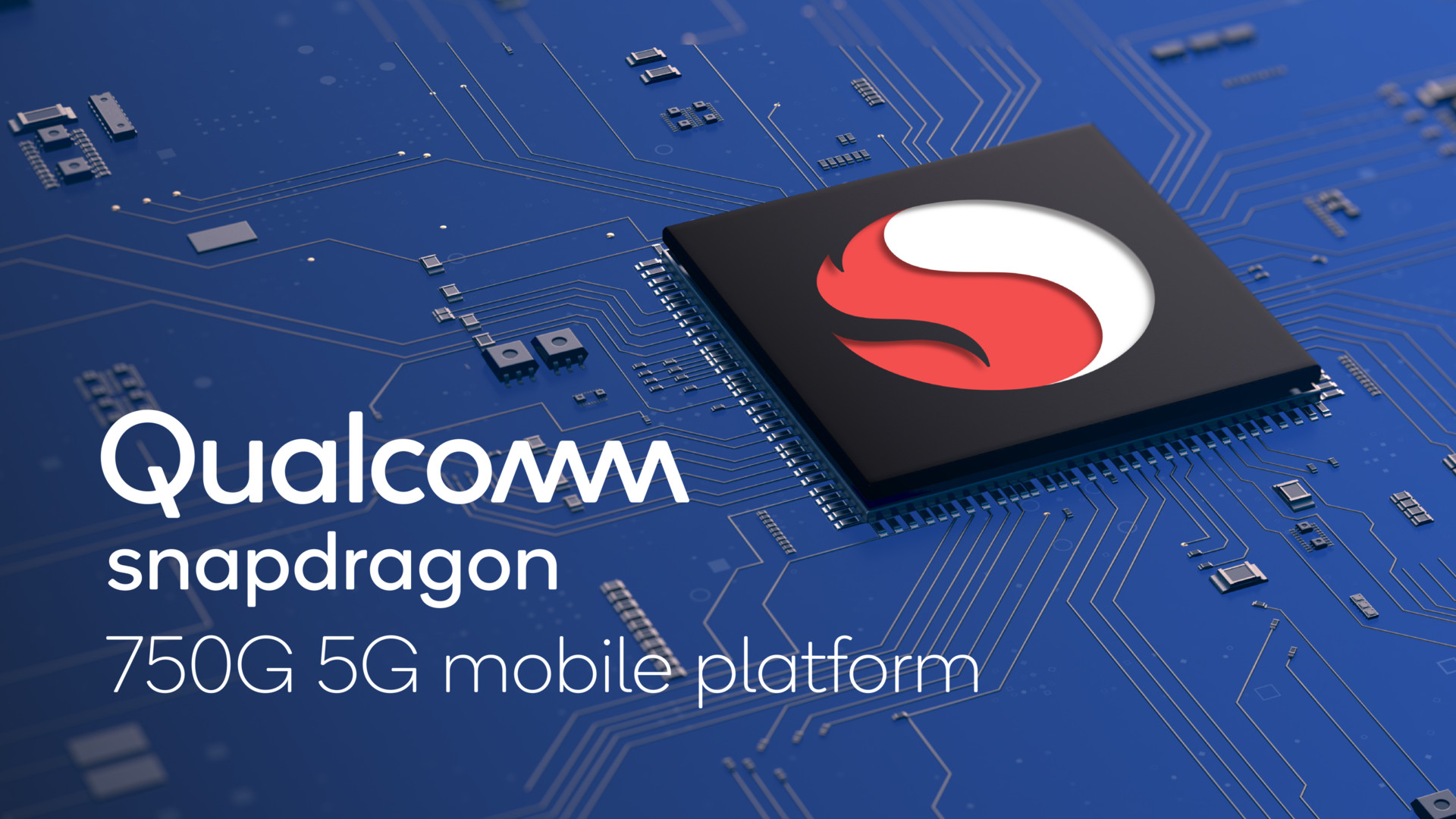Affiliate links on Android Authority may earn us a commission. Learn more.
Qualcomm Snapdragon 750G announced: More choice for affordable 5G
September 22, 2020

Some of 2020’s most intriguing smartphones have landed in the mid-tier category, including the OnePlus Nord and Google Pixel 4a. They offer interesting new designs, affordable price points, and even 5G connectivity, in part due to their use of Snapdragon 7 series processors. Now, the company behind those smartphone SoCs is back with a new mid-tier 5G option: the Qualcomm Snapdragon 750G.
Qualcomm seems pretty proud of making 5G more affordable so quickly. But besides cheaper and faster networking, what else is new?
For starters, the Snapdragon 750G offers a revamped CPU architecture based on Arm’s Cortex-A77 cores. This is a first for the 7 series, theoretically giving the chip more CPU grunt than the 765G. Qualcomm claims this provides a 20% performance boost compared to the Snapdragon 730G. There’s a decent 10% uplift to graphics performance too via Qualcomm’s Adreno 619. The GPU arrives complete with Snapdragon Elite Gaming features, including support for HDR gaming content, Game Color Plus, and updatable Adreno drivers. So, good news for gamers.
| Snapdragon 750G | Snapdragon 732G | Snapdragon 765 / 765G | |
|---|---|---|---|
CPU | Snapdragon 750G Kryo 570 octa-core 2x Performance @ 2.2GHz (Cortex-A77) 6x Efficiency @ 1.8GHz (Cortex-A55) | Snapdragon 732G Kryo 470 octa-core 1x Prime @ 2.3GHz (Cortex-A76) 1x Performance @ 2.2GHz (Cortex-A76) 6x Efficiency @ 1.7GHz (Cortex-A55) | Snapdragon 765 / 765G Kryo 475 octa-core 1x Prime @ 2.3GHz (Cortex-A76) 1x Performance @ 2.2GHz (Cortex-A76) 6x Efficiency @ 1.8GHz (Cortex-A55) |
GPU | Snapdragon 750G Adreno 619 | Snapdragon 732G Adreno 618 | Snapdragon 765 / 765G Adreno 620 |
DSP | Snapdragon 750G Hexagon 694 with Tensor Accelerator | Snapdragon 732G Hexagon 688 | Snapdragon 765 / 765G Hexagon 696 with Tensor Accelerator |
Camera | Snapdragon 750G 36MP single/16MP dual with Zero Shutter Lag 192MP snapshot | Snapdragon 732G 48MP single or 22MP dual 192MP snapshot | Snapdragon 765 / 765G 36MP single/22MP dual with Zero Shutter Lag 192MP snapshot |
Modem | Snapdragon 750G Snapdragon X52 5G/LTE 5G - 3700Mbps down, 1600Mbps up 4G - 1200Mbps down, 210Mbps up | Snapdragon 732G Snapdragon X15 LTE 800Mbps down, 150Mbps up | Snapdragon 765 / 765G Snapdragon X52 5G/LTE 5G - 3700Mbps down, 1600Mbps up 4G - 1200Mbps down, 210Mbps up |
Other Wireless | Snapdragon 750G Bluetooth 5.1 WiFi 6-ready Qualcomm TrueWireless and aptX Adaptive audio | Snapdragon 732G Bluetooth 5.1 WiFi 6-ready Qualcomm TrueWireless and aptX Adaptive audio | Snapdragon 765 / 765G Bluetooth 5.0 WiFi 6-ready Qualcomm TrueWireless and aptX Adaptive audio |
Fast charging | Snapdragon 750G Quick Charge 4+ | Snapdragon 732G Quick Charge 4+ | Snapdragon 765 / 765G Quick Charge 4+ Quick Charge AI |
The Snapdragon 750G also boasts 4.0 TOPS of AI performance and Qualcomm’s 5th generation AI Engine. That’s another 20% improvement over the 730G that will help out in machine learning scenarios, but doesn’t quite match the 5.5 TOPS available in the Snapdragon 765. The chipset also supports 4K HDR video capture, 192MP camera snapshots, and FHD+ displays at up to 120Hz or QHD up to 60Hz. This is all pretty familiar stuff for Qualcomm’s mid-range products and offers everything manufacturers need to build comprehensive affordable handsets.
Quick Charge 4 Plus comes as standard for fast charging and compatibility with USB Power Delivery, as we’ve come to expect. On the 5G side, the modem is a Snapdragon X52 model. This supports dynamic spectrum sharing, multi-SIM support, and both mmWave and sub-6GHz bands. Although I doubt we’ll see affordable phones stump up for the more expensive mmWave antenna parts. Qualcomm’s Snapdragon 750G is a very robust package overall and a definite upgrade on the 730G comparison point the company cites.
Read more: Snapdragon SoC guide: All of Qualcomm’s smartphone processors explained
Even though the Snapdragon 750G is a solid package, it’s a little tricky to envision exactly where this chip fits into the portfolio. The SoC is clearly not a replacement for the relatively new Snapdragon 732G, which remains a 4G-only option. However, the chip sits just under the capabilities of last year’s Snapdragon 765G and doesn’t add anything majorly important except for the CPU upgrade. It’s also incredibly similar to the 5G-ready, Cortex-A77-powered Snapdragon 690, but with Elite Gaming and mmWave features included. So, where exactly does the 750G fit in?
My suspicion is that the 750G exists in preparation for a higher-end entry in the 7 series that will replace the nearly year-old 765G. Qualcomm’s latest announcement will then slot into the middle of the updated portfolio, offering a slightly more cost-effective option for mid-range 5G phones. We fully expect a number of affordable 5G handsets sporting the Snapdragon 750G sometime in the first half of 2021.